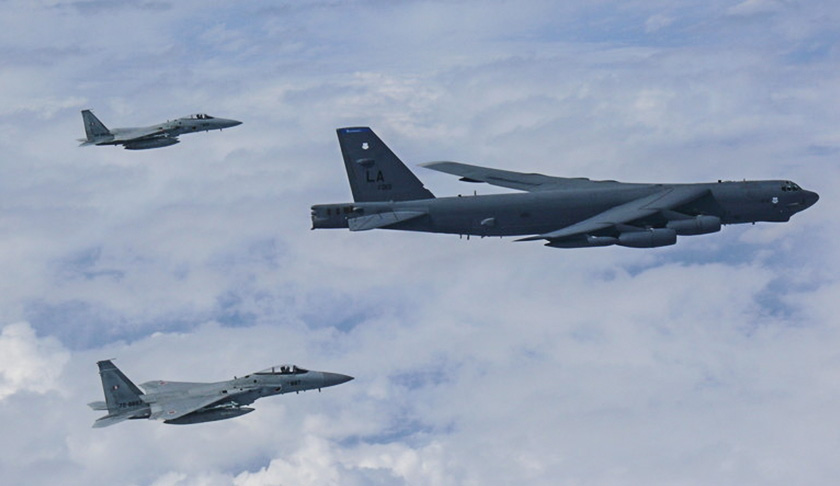The US has sought to reassure regional allies with renewed freedom of navigation and air operations over contested islands in the South China Sea, as the strategic competition between the US and China raises concerns among Indo-Pacific powers, including Australia.
For the second time in 10 days, the US has conducted a series of freedom of navigation and overflight campaigns in the South China Sea (SCS) amid growing tensions and territorial rivalries in the geo-politically sensitive area.
The fly-over by two Guam-based US Air Force B-52 Stratofortress bombers comes following the successful completion of the COPE North 2019 exercise, which included aircraft from the Japanese Air Self-Defense Force (JASDF) and the Royal Australian Air Force.
Australia's contribution to the COPE North 2019, which includes 12 F-18A Hornets, a E-7A Wedgetail Airborne Early Warning and Control aircraft, two C-27J Spartans, a KC-30A Multi-Role Tanker Transport, a Combat Support Element and an Aeromedical Evacuation Team, has been deployed to the exercise, which included humanitarian assistance, disaster relief and air combat training.
A US Pacific Air Forces spokesperson said, "Two B-52H Stratofortress bombers took off from Andersen Air Force Base, Guam, and conducted routine training in the vicinity of the South China Sea on March 13 [Hawaii Standard Time], before returning to base. US aircraft regularly operate in the South China Sea in support of allies, partners and a free and open Indo-Pacific."
Tensions between China and the US have continued to grow in recent months, driven by the trade war, in combination with what US Secretary of State Mike Pompeo describes as Beijing's "illegal island-building in international waterways", namely in the South China Sea. This has also served to raise eyebrows among a number of regional US allies, including Australia, Japan and the Philippines, each of whom have economic and strategic interests in the strategically-sensitive waterways.
This US response follows continued diplomatic and military confrontations and is further enhanced by the growing capability of the Chinese military, which has embarked on an unprecedented period of modernisation and expansion across a number of key domains as it seeks to assert itself throughout the region.
The reclamation of islands throughout the SCS, particularly for military use despite claims to the opposite, combined with increased acts of intimidation and harassment of naval vessels and aircraft from the Philippines, Vietnam, more recently Japan and, most concerning, the US, has prompted a number of red flags to be raised.
These rising tensions build on a tumultuous 2018 in the region, particularly as Chinese and US naval and air forces continued to test one another's resolve, which Malcolm Davis of the Australian Strategic Policy Institute (ASPI) described to Defence Connect: "2018 was an interesting year in the South China Sea. It started fairly early on with the basing of anti-ship cruise missiles (ASCM) on reclaimed islands in the SCS, the basing of the upgraded, H-6K nuclear capable bomber on Woody Island and more recently the USS Decatur (DDG-73) incident really reinforces that China is not backing down from its territorial ambitions."
Supporting the overflights, the US Navy's Seventh Fleet flagship, the USS Blue Ridge, sailed through the contested waterways, marking renewed commitment by the US to "sail, fly and operate wherever the law allows" it to.
These continued tensions are serving to highlight the growing similarities with the pre-World War II era, placing growing concern about the viability and suitability of the 2016 Defence White Paper, the ADF's planned force structure, capability requirements and expenditure should the already precarious strategic reality continue to degrade.
Have your say in the comments section below, or get in touch with



